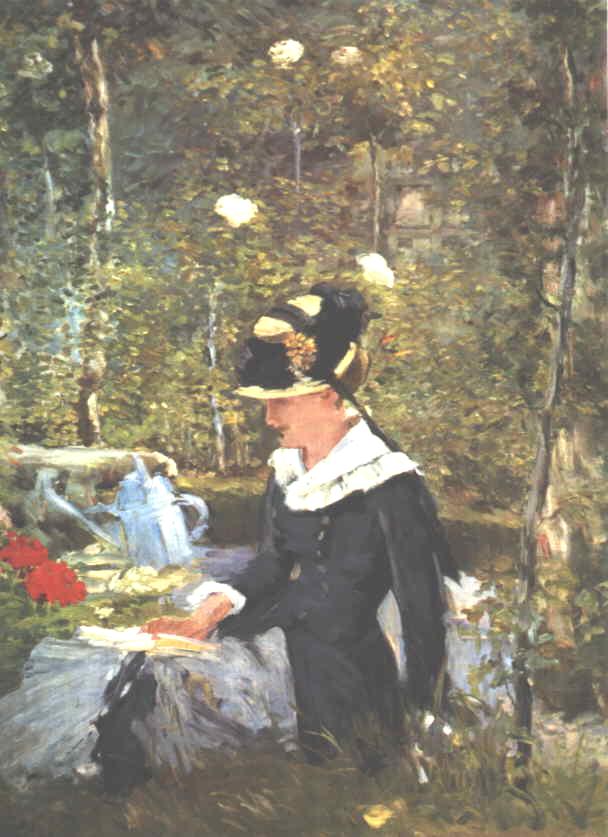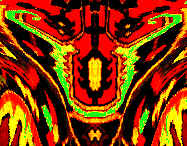— Charles Demuth was born and died in Lancaster, Pennsylvania. He was born in a Lancaster house on North Lime Street. At age 7, he and his family moved to the King Street home where he spent most of his lifetime. He was the only child of successful business people; they were financially secure so that Demuth never had to work for a living, although he was never wealthy. Demuth's health was frail; from an early age he suffered from lameness and as an adult from severe diabetes. At sixteen, after a long, isolated adolescence, Demuth was sent to a prestigious private prep school, the Franklin and Marshall Academy, from which he was graduated in 1901. He remained at home for two more school years before enrolling at the Drexel Institute of Art, Science, and industry in Philadelphia, then he studied with Thomas Anshutz and William Merritt Chase at the Pennsylvania Academy of the Fine Arts. As a young man Demuth made several trips to Europe to study. There he became part of the avant garde scene. He was attracted by the work of Marcel Duchamp and the Cubists. As he matured he moved gradually away from illustrative art. He executed a series of watercolors of flowers, circuses, and café scenes. Impressed by his abilities Alfred Stieglitz featured his works in his New York Gallery. Later in his career, Demuth began to paint advertisements and billboards into such cityscapes as his "Buildings, Lancaster" (1930), in which bold, commercial lettering is complemented by the severely hard-edged abstraction of buildings. Demuth created most of his art in his home where he worked in a small second floor studio of the rear wing, overlooking the garden. He was homosexual and lived with his partner Robert Locher at home with his parents. In his will he bequeathed his watercolors to Robert Locher, and all his other paintings to Georgia O'Keeffe. Among Demuth's best-known works are his poster portraits such as the tribute to the poet William Carlos Williams, "I Saw the Figure 5 in Gold.". Charles Demuth died of complications from diabetes in 1935, shortly before his fifty-second birthday. He helped channel modern European movements into US art and was a leading exponent of Precisionism. Less known are his pictures of flowers, Bermuda, and the homosexual navy scene.
 —
The Figure 5 in Gold is deservedly one of the icons of US modernism,
but it came almost at the end of Demuth's life and its author has always
seemed a little elusive beside the heavier reputations of his contemporaries
— Georgia
O'Keeffe, Marsden
Hartley, Arthur
Dove, Charles
Sheeler. Of them all, he was the most unabashed esthete. And the wittiest
too: it's hard to imagine any of his colleagues painting a factory chimney
paired with a round silo and calling it, in reference to star-crossed lovers
in a French medieval romance, Aucassin
et Nicolette.
—
The Figure 5 in Gold is deservedly one of the icons of US modernism,
but it came almost at the end of Demuth's life and its author has always
seemed a little elusive beside the heavier reputations of his contemporaries
— Georgia
O'Keeffe, Marsden
Hartley, Arthur
Dove, Charles
Sheeler. Of them all, he was the most unabashed esthete. And the wittiest
too: it's hard to imagine any of his colleagues painting a factory chimney
paired with a round silo and calling it, in reference to star-crossed lovers
in a French medieval romance, Aucassin
et Nicolette.Blessed with a private income from his parents in Lancaster, Pennsylvania, coddled in childhood, lame, diabetic, vain, insecure, and brilliantly talented, Demuth lacked neither admirers nor colleagues. He was well read (and had a small talent as a writer, in the Symbolist vein) and his tastes were formed by Pater, Huysmans, Maeterlinck, and The Yellow Book; he gravitated to Greenwich Village as a Cafe Royal dandy-in-embryo. Free of market worries, he did a lot of work that was private in nature, for the amusement and stimulation of himself and his gay friends, and much of it was unexhibitable — at least until the 1980s.
Demuth was a rather discreet homosexual, but if he could not place his deepest sexual predilections in the open, he could still make art from them. Seen from our distance, that of a pornocratic culture so drenched in genital imagery that sly hints about forbidden sex hardly compel attention, the skill with which he did this might seem almost quaint. But in the teens and twenties the public atmosphere was of course very different, and Demuth, like other artists in the avant-garde circle that formed around the collectors Loulse and Walter Arensberg — especially Marcel Duchamp, whose recondite sexual allegory The Bride Stripped Bare by Her Bachelors, Even Demuth called "the greatest picture of our time" — took a special delight in sowing his work with sexual hints. To create a secret subject matter, to disport oneself with codes, was to enjoy one's distance from (and rise above) "straight" life. The handlebar of a vaudeville trick-rider's bicycle turns into a penis, aimed at his crotch; sailors dance with girls in a cabaret but ogle one another.
If these scenes of Greenwich Village bohemia were all that Demuth did, he would be remembered as a minor US esthete, somewhere between Aubrey Beardsley and Jules Pascin. But Demuth was an exceptional watercolorist and his still-lifes and figure paintings, with their wiry contours and exquisite sense of color, the tones discreetly manipulated by blotting, are among the best things done in that medium by a US artist. They quickly rise above the anecdotal and the "amusing."
About 1920 Demuth began with increasing confidence to explore what would become the major theme of his career: the face of the industrial US. It may seem odd that Demuth, yearning for Paris, should have become obsessed with grain elevators, water towers, and factory chimneys. But as he wrote to Stieglitz in 1927: "America doesn't really care - still, if one is really an artist and at the same time an American, just this not caring, even though it drives one mad, can be artistic material." Precisionism was by no means just a provincial US response to the European avant-garde - the splintering of planes from French Cubism, the machine ethos from Italian Futurism. Sheeler and Demuth were painting a functional US landscape refracted through a deadpan modernist lingo that, in Demuth's case, picked up bits of Robert Delaunay and Lyonel Feininger while anticipating some of the essential subjects of Pop art.
The machine emblems of this US landscape had fascinated some of the best minds in Europe (Picabia, Duchamp, Le Corbusier), who saw them either as exotic whiffs of the Future or as instruments of irony. Being from the US, Demuth took the silos and bridges rather more literally. Out of this came his Precisionist masterpiece, My Egypt (1927). It is a face-on view of a grain elevator in Lancaster, Pennsylvania, Demuth's hometown, painted with such careful suppression of gesture that hardly a brushstroke can be seen. Demuth's title whimsically refers to the mania for Egyptology planted in US popular culture in 1922, when Howard Carter discovered Tutankhamen's tomb. The visual weight of those twin pale silo shafts and their pedimental cap does indeed suggest Karnak.
But Demuth may have had a deeper level of intent. His title connects to the story of Exodus. Egypt was the symbol of the Jews' oppression; it was also the starting point for their collective journey toward the land of Canaan, the forging of themselves as a collective and distinct people. An invalid in later life, Demuth was "exiled" in Lancaster, bedridden in his parents' house, cut off from the intellectual ferment of Paris and the sexual-esthetic comradeship of New York. All these were Canaan; home was Egypt. Yet he was poignantly aware that the industrial America which gave him a rentier's income had also given him a great subject which would define him as a painter. From that tension, his finest work was born.
— LINKS
— From the Garden of the Chateau (no garden, no chateau, 1921, 51x64cm)
— Trees and Barns: Bermuda (1917)


